| |
HCV Death Rate Trends in USA
County-Level Variation in Hepatitis C Virus Mortality and Trends in the United States, 2005-2017
|
| |
| |
August 2021 Hepatology
Download the PDF here
These results illustrate a widespread shift in HCV mortality trends since 2013, but the magnitude and composition of that shift have occurred differently by place and age group. Before 2013, increases in HCV death rates were widespread throughout the country. Although national HCV mortality trends reversed in 2013, there is much more heterogeneity in recent trends at the county level. Since 2013, decreasing national trends have been driven primarily by large, decreasing HCV death rates in the West, Southwest, and Northeast. However, roughly one in five counties have experienced an increase in HCV death rates during this same time period, and these counties are disproportionally concentrated in Texas, Oklahoma, Appalachia, and the area surrounding New Orleans.
COUNTY-LEVEL HCV DEATH RATES AND TRENDS
The overall median county-level HCV death rate was lower than the national average (2017 median rate = 3.66; interdecile range, 2.19, 6.77). In 2017, 61.0% (n = 1,732) of counties with reliable rate estimates had an age-adjusted HCV death rate lower than the National Progress Report 2020 Goal of 4.17 per 100,000 persons(4) (Supporting Table S1). The spatial pattern of HCV death rates in 2017 indicated that the highest rates are primarily concentrated in the West, Southwest, Appalachia, and northern Florida (Fig. 1). Stratifying the 2017 HCV death rates by age group reveals the emergence of some key spatial trends. The highest burden of HCV death rates among persons <40 years of age occurred in New Mexico, Oklahoma, and Appalachia, primarily in a geographic band that stretches from Tennessee through Pennsylvania (Fig. 2). In contrast, the highest burden of HCV deaths among adults who were 40+ years of age were concentrated along the west coast in and in the Southwest.
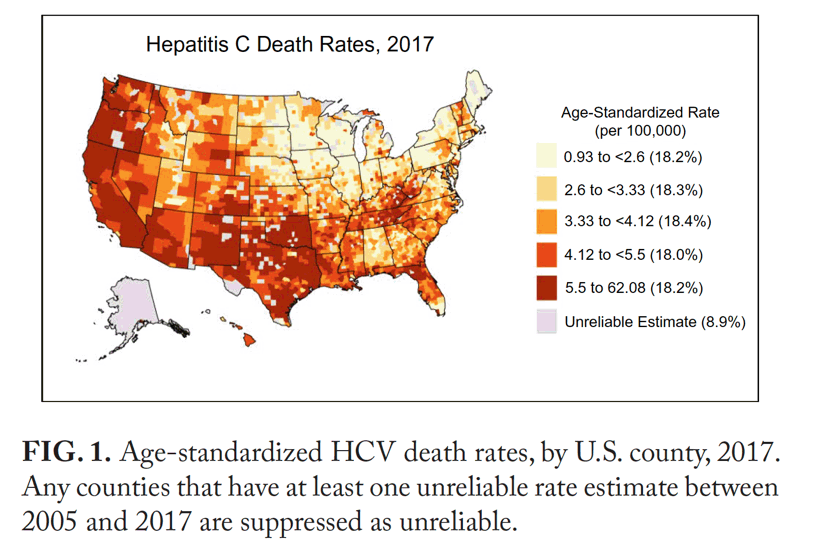
Of the 2,839 counties with reliable rate estimates for all years, HCV mortality increased in 95.3% (n = 2,705) of counties from 2005 to 2013. Counties that did not experience an increase in HCV death rates during this time frame were primarily centered around urban areas, such as St. Louis; New Orleans; Miami; Washington, DC; and New York City (Fig. 3). In contrast, 80.0% (n = 2,274) of counties with a reliable trend estimate experienced a decrease in HCV mortality between 2013 and 2017. A total of 803 counties (25.8%) had a decline in HCV mortality that was faster than the national decline (average annual percent change between 4.33% and 5.01%) during this time period (Fig. 4). Many of these counties were located in the Plains states, in Michigan and Wisconsin, and in the Northeast. Counties that had an increase in HCV mortality during this time frame were concentrated in Oklahoma, Texas, and parts of Appalachia, stretching from Kentucky up through western Pennsylvania. The majority of urban areas that experienced a decrease in HCV mortality from 2005 to 2013 continued that trend from 2013 to 2017. The notable exceptions are the counties around New Orleans, in which HCV death rates increased between 2013 and 2017.
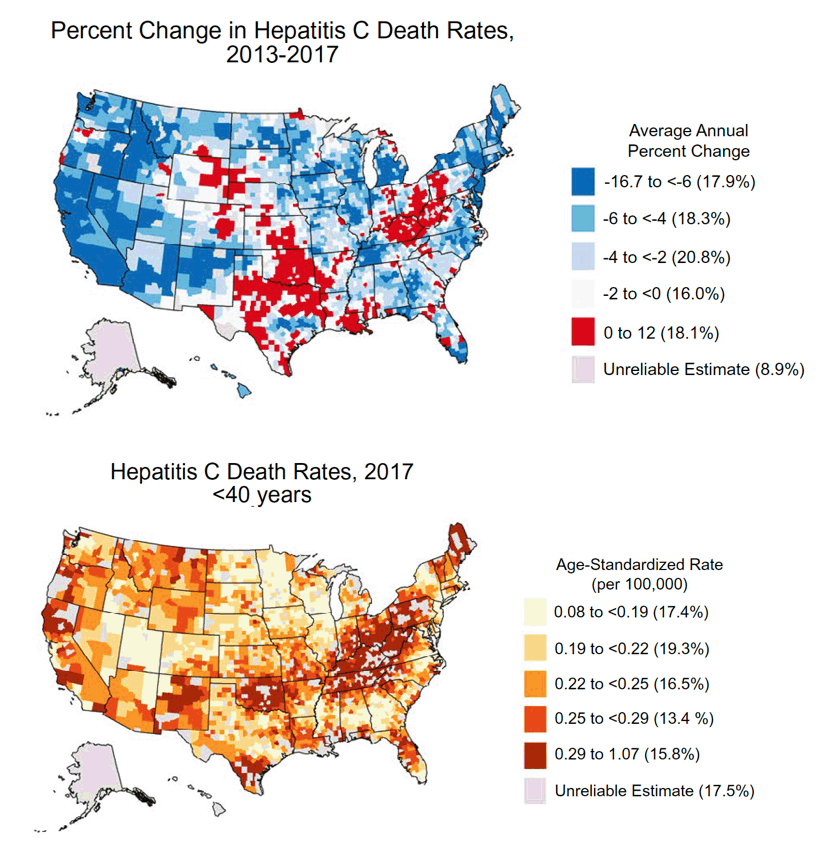
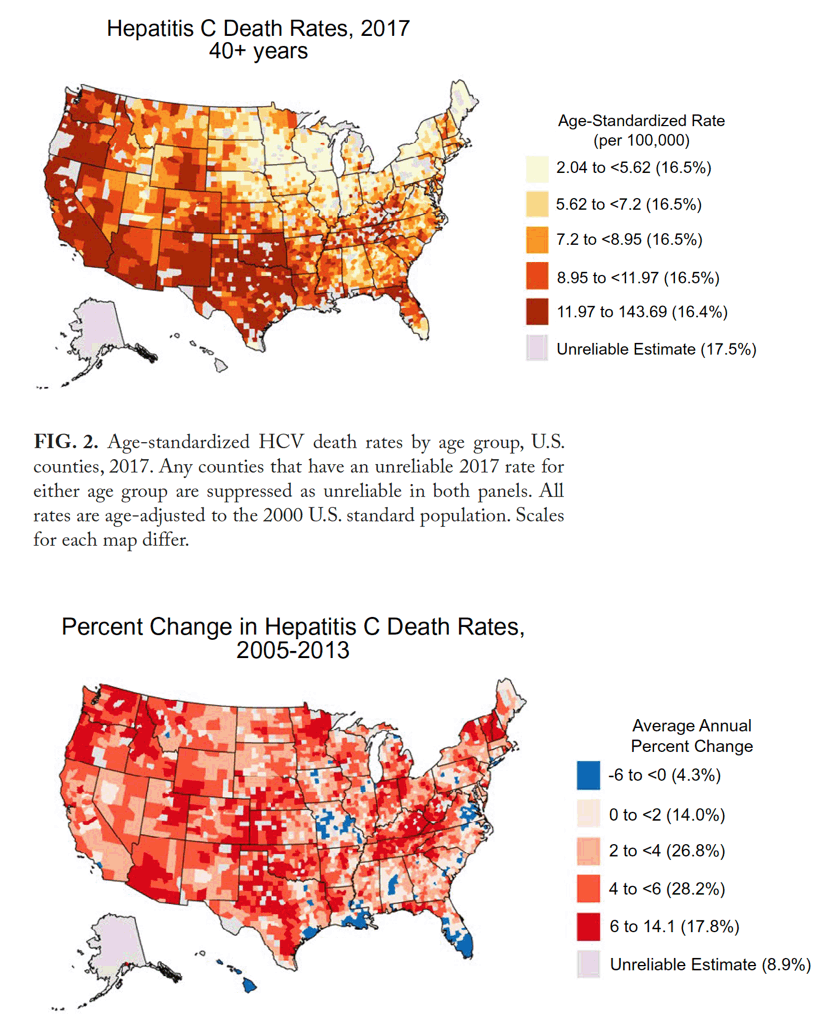
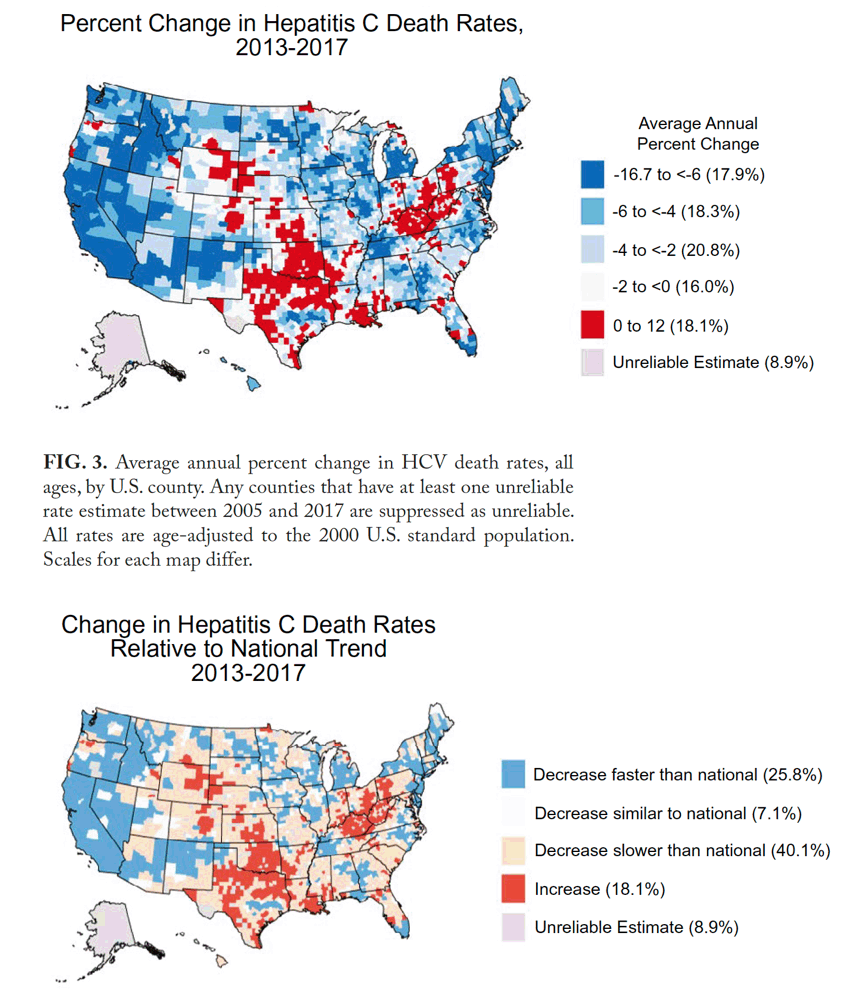
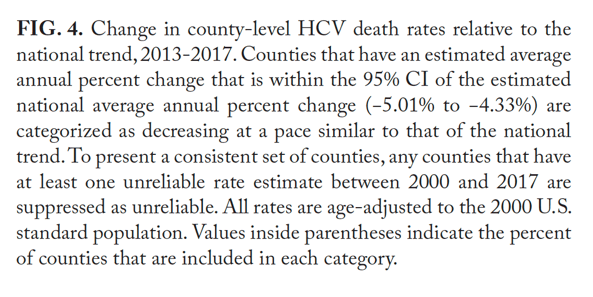
| |
| |
| |
|
|
|